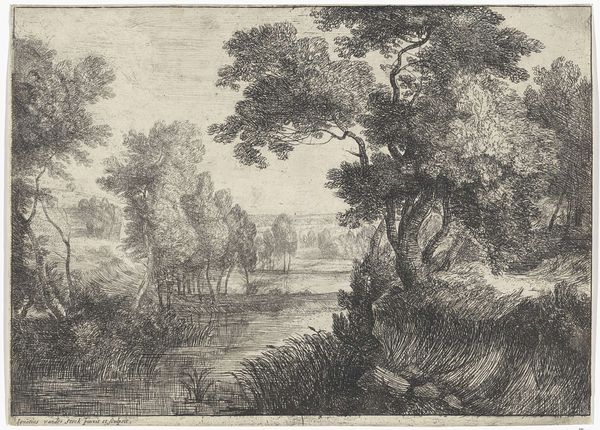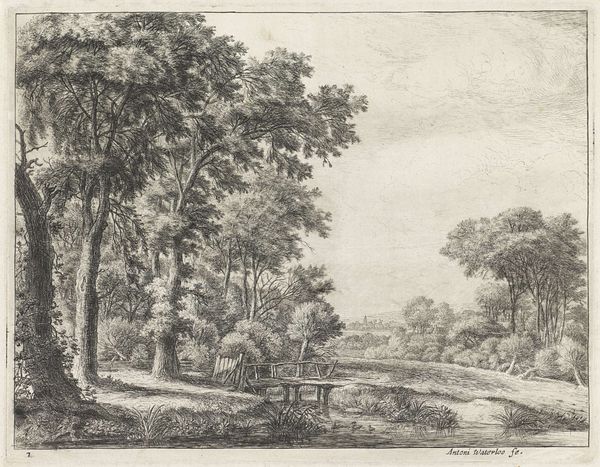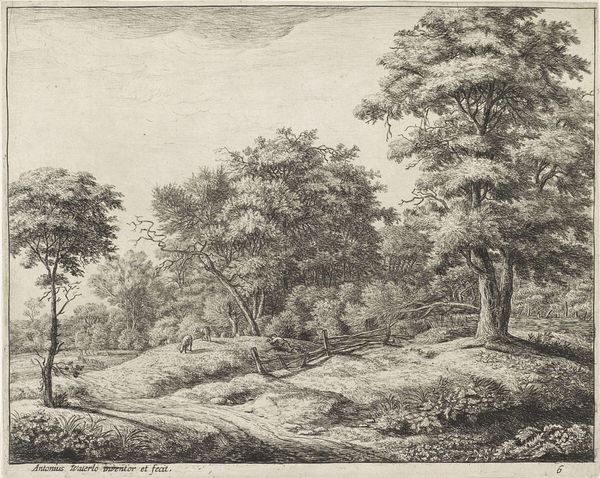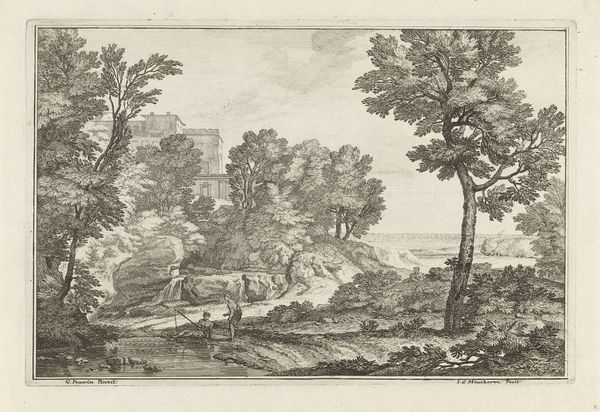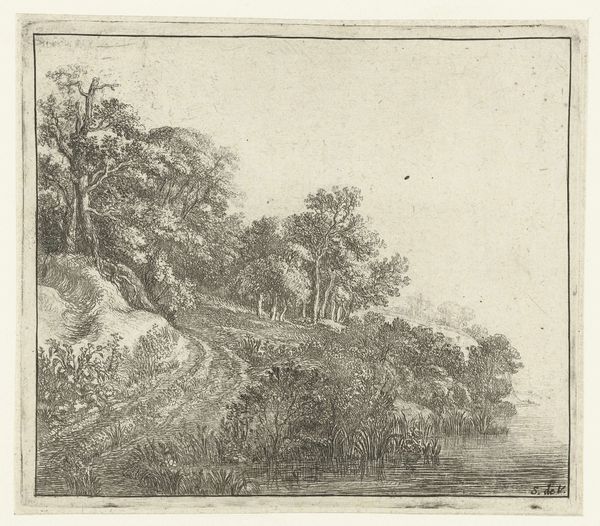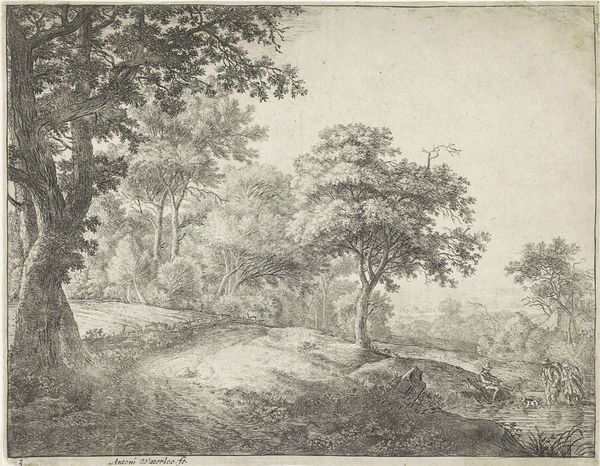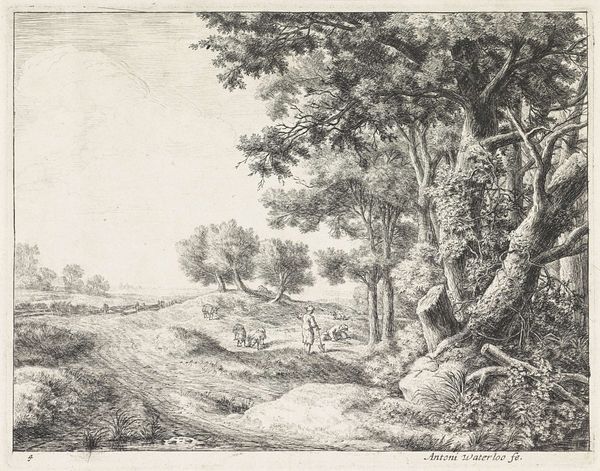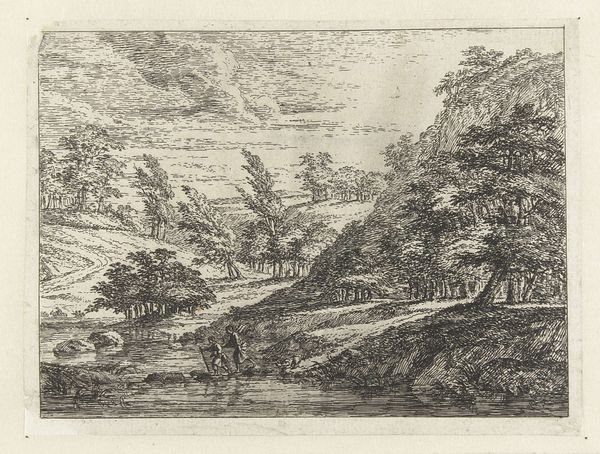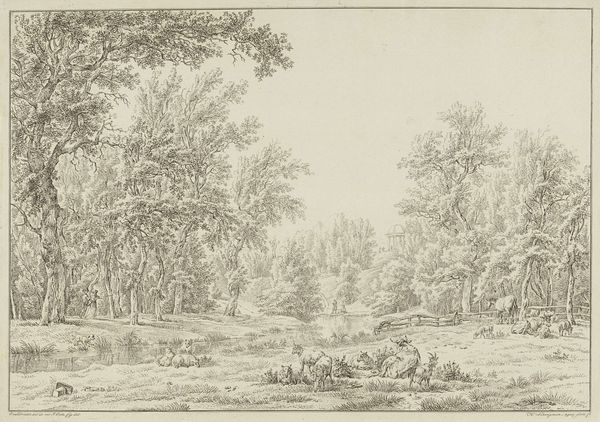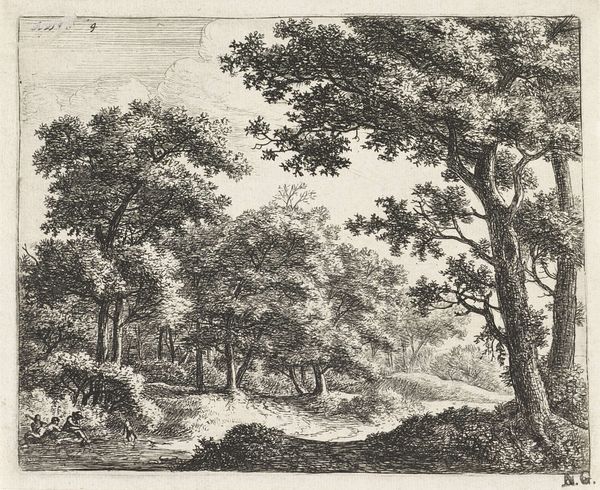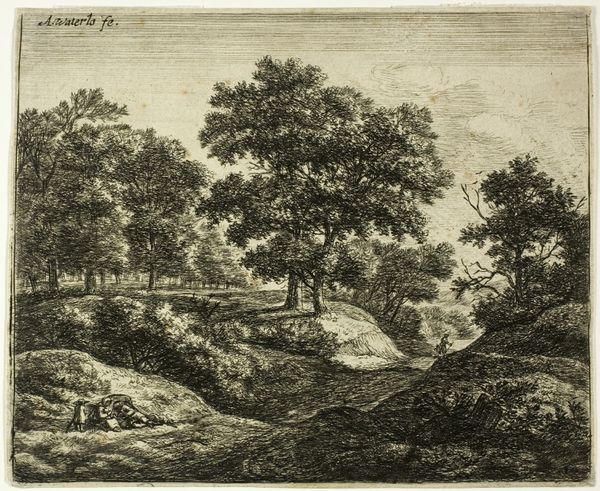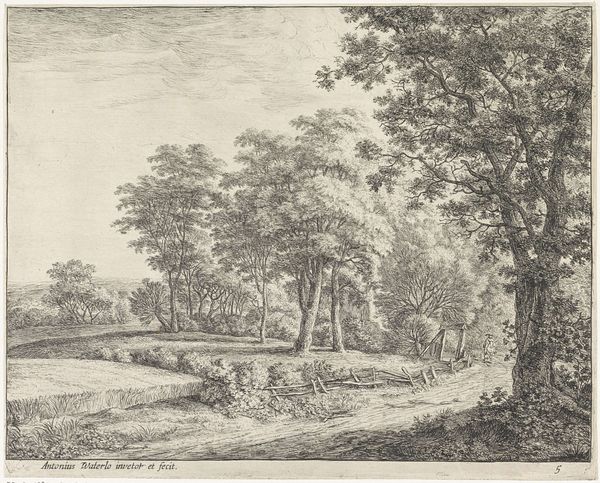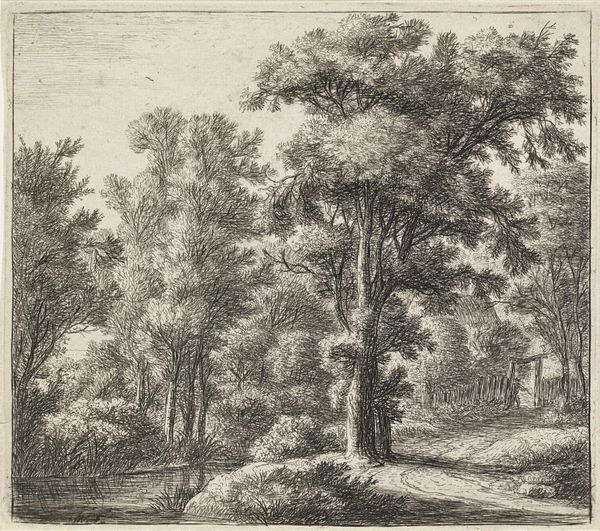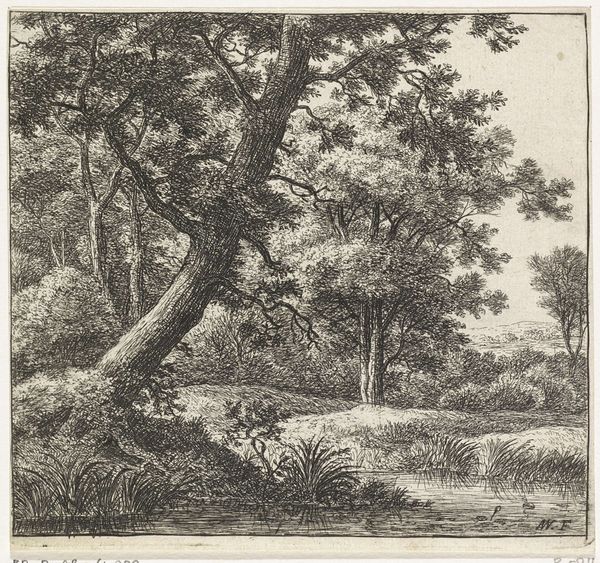
etching
#
lake
#
dutch-golden-age
#
etching
#
old engraving style
#
landscape
#
road
#
pencil drawing
#
forest
Dimensions: height 136 mm, width 157 mm
Copyright: Rijks Museum: Open Domain
Curator: Today we're looking at Simon de Vlieger’s "Heuvel met bebossing," created sometime between 1610 and 1653. It's a delicate etching. Editor: My first impression is how tranquil it feels, even with the intricacy of the lines. The textures create a dense yet peaceful landscape, almost like a daydream. Curator: It's quite typical of the Dutch Golden Age landscape tradition. Vlieger, like many of his contemporaries, was captivated by the natural world. This piece really reflects the growing national pride and exploration of the Dutch countryside. Artists gained prominence when city dwellers moved towards country life, thus turning rural environments into an industry of leisure and beauty. Editor: Right. And the dirt path winding through the forest creates a distinct pathway of class dynamics and control. Roads enable some and obstruct others, determining who can traverse through land while being governed under nature's force. Who does that road really serve, and who might it exclude? Curator: That’s a very good point, thinking about who has access to these idealized landscapes. One can also observe the technique – the precision of the etched lines really contributes to a feeling of closeness to nature, even a scientific curiosity to capture and portray the nature from which their homeland benefits greatly from. Editor: Absolutely. The symbolism is so intertwined with power dynamics. The artist could not conceptualize art separate from class, gender, race, and all the other intersectional aspects of existence. The artist cannot extract themselves or their art from real issues and pressing dilemmas. Curator: I agree—the seemingly idyllic imagery of this forest and lakeside has a subtext deeply ingrained in its social context, a society which benefits from environmental control but end up only benefiting from those that contribute to it financially. Editor: Reflecting on it, I now see how such a serene piece speaks volumes about complex relations in Dutch society. It serves to remind us how cultural products carry narratives much bigger than themselves. Curator: It has truly altered my perspective as well, allowing me to view the image as one less associated with the historical context. Art does provide avenues into broader cultural awareness.
Comments
No comments
Be the first to comment and join the conversation on the ultimate creative platform.
